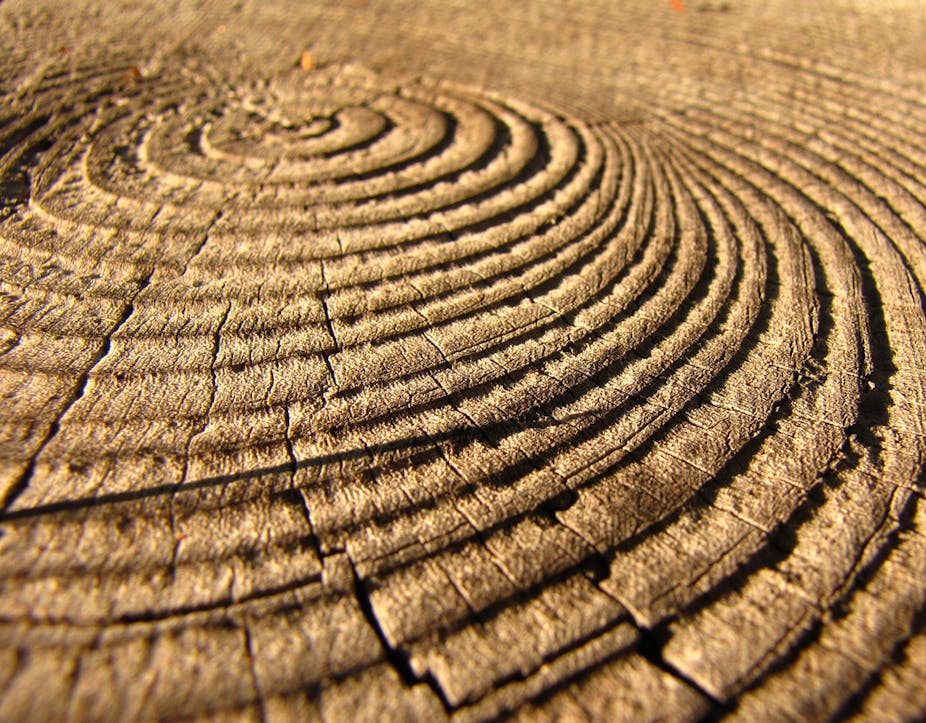Update October 2012: The manuscript “Evidence of unusual late 20th century warming from an Australasian temperature reconstruction spanning the last millennium” by Joelle Gergis, Raphael Neukom, Ailie Gallant, Steven Phipps and David Karoly has been re-submitted to the Journal of Climate and is being reviewed again.
It was originally put on hold after the authors identified an inconsistency between the methodology described and the methodology that was ultimately used to produce the findings.
The lead author, Professor David Karoly, told The Conversation: “The actual method … included the long-term trend in the temperatures over the period from 1920 to 1990. The manuscript describes the method as having removed the long-term trend. So there’s an inconsistency between what is written in the manuscript and the method that was actually used.
"There’s a scientific debate as to which is the best method to use - whether the long-term trend should be included in looking at the relationship between the proxy data [such as data taken from tree rings] and the observed temperatures in the period from 1920 to 1990, or whether it should be removed and you should only look at the year-to-year variations. That’s a scientific discussion we’re not sure about, and we’re looking at both in reprocessing the data. The issue, however, was that the manuscript said one method was used, and another was used.
"Now that we’ve identified this issue, we will be double- and triple-checking everything. So we won’t rush this. We expect it won’t be until the middle of July until all the data processing is completed, and we expect to submit a revised manuscript back to the journal by the end of July.”
Post-1950s warming in the Australasian region is unmatched by any climate fluctuations over the past 1,000 years, according to the first large-scale temperature reconstruction for the area.
A team of scientists led by the University of Melbourne used natural climate records to study temperatures in the region over the past millennium and compare them to climate model simulations.
Lead researcher, Dr Joelle Gergis from the University of Melbourne’s School of Earth Sciences, said the results showed there were no other warm periods in the past 1,000 years that matched the warming experienced in Australasia since 1950.
The findings of the study, published today in the Journal of Climate, will form the Australasian region’s contribution to the 5th IPCC climate change assessment report chapter on past climate.
“What we did was to compare natural records like tree rings and corals and ice cores with climate model simulations to try to find out why the climate is changing the way it is,” Dr Gergis said.
These “palaeoclimate” records, provided by decades of work by more than 30 researchers from Australia, New Zealand and around the world, were needed to calculate climate variability before direct temperature records started in 1910, she said. The research team “crunched the numbers in 3,000 different ways to ensure the results were robust.
"We looked at things such as volcanoes and solar activity and things like ocean circulation, and what we found is that the post-1950 warming cannot by explained by natural variability alone, which suggests a strong influence of greenhouse gases in the Australian region,” she said.
“Tree rings and corals and ice cores have annual laminations, so they’re responding to things like temperature and rainfall variations, season to season and year to year,” she said. “So what you can then do is compare them directly to modern instrumental temperature records, and you develop a physical relationship between, say, tree ring growth and the temperature record, and then you can take that relationship centuries back in time.
"So they’re not direct thermometer readings or anything like that. But what we do is use a range of different records and we pull out the common signal, so it’s not biased based on just one record.”
Dr Gergis said reconstructions of regional temperature not only provided a climate picture of the past but could also reduce uncertainties about future climate change.
The study is part of the PAGES (Past Global Changes) global collaboration to reconstruct the past 2,000 years of climate across every region in the world.
In the Australasian region it was “difficult to get these really finely resolved records that resolve climate on annual timescales, so we didn’t have enough high-quality data to go back 2,000 years,” Dr Gergis explained. “But for the past 1,000 years, we felt we could say with confidence we had enough records to come up with strong and reliable results.”
Collaborators included the Climate Change Research Centre and the ARC Centre of Excellence for Climate System Science, University of New South Wales where the climate modelling was conducted.

